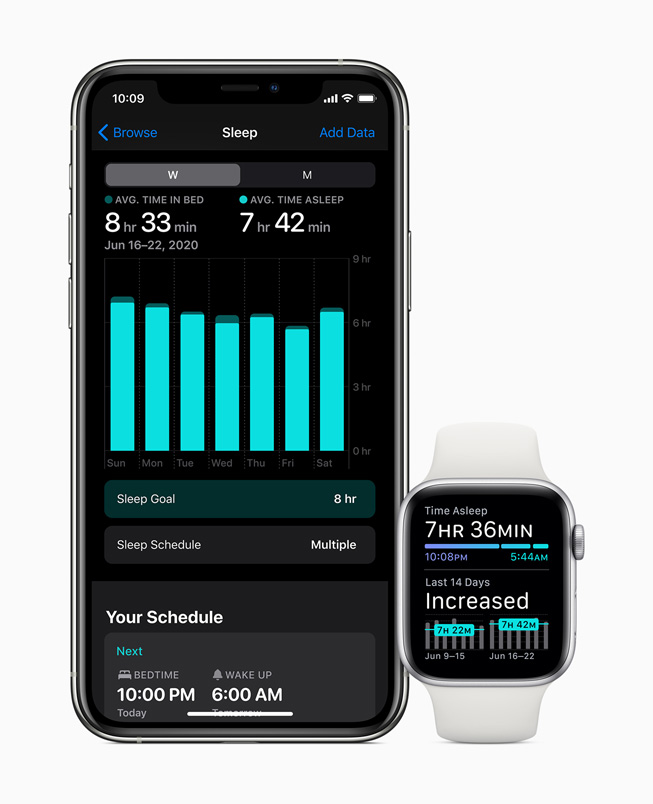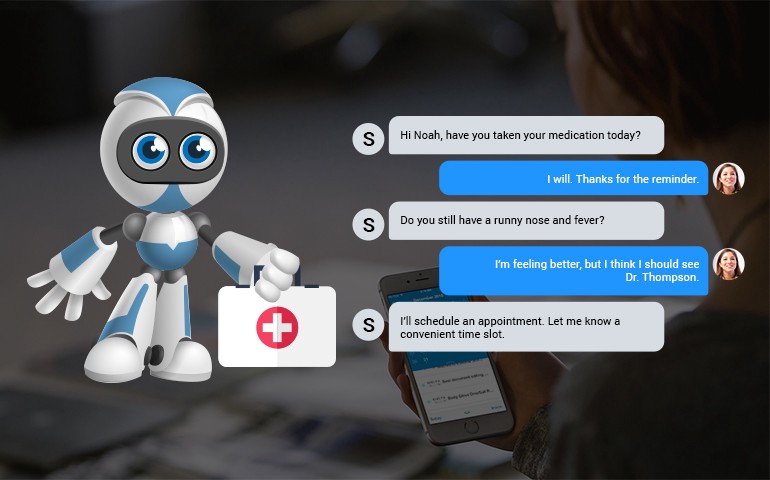Healthcare is more important than ever, it’s the main concern on everyone’s minds during the Covid-19 pandemic. And as with everything that involves users, user experience is vital. In this article, we will look at the healthcare UX challenges of 2021.
In this Article
Modern technology has brought about better services and products for patients, doctors, and other healthcare providers and will continue to transform the healthcare industry as technology evolves. It’s essential that the healthcare UX needs to be intuitive and user-friendly, especially to avoid wasting the valuable time of healthcare providers.
Technology has revolutionized the healthcare industry, but with it comes challenges in designing the UX for healthcare. Let’s look at 6 tech trends in healthcare and their respective UX challenges.
2021 Healthcare UX Challenges
1. Wearable Technology & Data Visualization
This tech trend has been around for quite a while now, mainly to monitor how many steps we have taken, our heart rate, sleep pattern or even our blood pressure.
Most users have a smartwatch as an extension of their mobile phones for daily use. In healthcare, wearable technology has been a helpful tool in complementing healthcare services. For example, patients make use of wearable technologies to record and keep track of their blood pressure in real-time. As a result, if there’s any unusual activities detected, an alert is sent out for immediate attention.
This is just one example of how wearable technology is being used. Wearable technology and other interactive equipment enables real-time data collection, tracking and transmission but with this, there are UX challenges involved.
UX Challenge:
The main function of these devices is to provide the most accurate data possible but the UX challenge is to make it easily understandable by users, whether it’s medical professionals or patients.
Numbers aren’t enough, data visualizations would be helpful for users to understand better. Furthermore, users don’t just want to see numbers but they want to be able to predict future well-being based on the statistics and data collected.

Credit: https://www.apple.com/newsroom/2020/06/watchos-7-adds-significant-personalization-health-and-fitness-features-to-apple-watch/
Complex interactions and interfaces can over-complicate and confuse users. Simplicity is key, especially for something that concerns numbers and data. In addition, users may choose to have a quick glance at the results or to go into a deeper dive for more information. The UX challenge here for wearable technologies is to prioritize information, and how best to convey important information.
2. Telemedicine
This has become a huge tech trend, mainly due to the rise of demand during the Covid-19 pandemic where patients and doctors prefer to have virtual consultation instead of risking their health and safety for a face-to-face appointment.
Telemedicine is great for consultations, further examination and analysis will be required for extensive medical cases but for a first-time consultation, it’s convenient and practical. Patients don’t need to travel to the clinic or doctor’s office if they can do it online. It saves time for both parties involved, and it has made it easier for those in rural areas to have access to healthcare.
Furthermore, hospitals are able to leverage remote patient consultations and video-based care delivery to create a more accessible way to reach patients. Telemedicine isn’t a replacement for face-to-face consultations but an added service to patients for ease and convenience, as well as saving costs. In fact, in Singapore, a study on the cost-effectiveness of the National Telemedicine Diabetic Retinopathy Screening Programme has proven to be more cost-effective compared to a traditional physician-based screening.
UX Challenge:
As with most things virtual or online, it lacks a sense of human connection. The UX challenge of telemedicine is the absence of a human presence that is prominent in face-to-face consultations. Patients may not feel like it’s a personal medical consultation when they are just looking at the telemedicine platform.
Doctors and other healthcare professionals may not want to lose the personal touch, and the UX challenge here is to prioritize the design of telemedicine to be as seamless as a personal visit to the doctor’s.
It’s recommended to conduct several rounds of user interviews in order to further anticipate the deeper emotional needs of a patient when using telemedicine, so that corresponding design improvements can be made to further excel telemedicine services.
3. Chatbots & Artificial Intelligence (AI)
Artificial intelligence (AI) has been doing wonders in healthcare and continues to have great potential in improving healthcare. As with telemedicine, chatbots can be used for a discussion with an AI doctor.
Chatbots can even help patients in setting appointments, to remind patients to take their medicine. Through machine learning, the patient experience may be improved through chatbots in which patients can self-diagnose or to help assist doctors in diagnosing patients.

Credit: https://chatbotsmagazine.com/chatbots-the-perfect-way-to-deliver-personalized-patient-care-d1278287602d
AI can be applied to many aspects of healthcare. For diagnostics, AI helps in improving the efficiency and cost-effectiveness. Instead of having to go through thousands of documents with human eyes, AI can quickly identify appropriate and essential information. Furthermore, AI can detect any changes in scans and be able to pinpoint any minor tumours or nodules that can’t be easily seen by the human eye.
UX Challenge:
This tech trend is gaining popularity, and with it comes a fair share of healthcare UX challenges, specifically for design and for communication. In the healthcare industry, providing precise and useful information is highly important. Therefore a primitive algorithm is simply not enough, and so the challenge is in creating and nurturing something that is able to continually learn as much as possible in the communication process.
4. Virtual Reality (VR) & Augmented Reality (AR)
Virtual reality and augmented reality is also gaining popularity in its uses in the healthcare industry. For VR, it helps in gaining experience and simulating virtual situations for medical professionals and patients alike.
VR provides simulations for doctors and medical professionals, especially students, to practice and hone their skillset and to prepare for complicated surgeries. Whereas VR headsets are used by patients to exercise, treat pain, anxiety, post-traumatic stress disorder (PTSD), and even stroke.
Both AR and VR technologies can assist in putting stroke patients in a robust and safe environment to help regain motor control. The simulated environment provided by these technologies offers more flexibility that physical therapy can’t always provide, and the controlled environment also allows data to be gathered to tailor care plans and to help other patients.
For example, Microsoft’s HoloLens is an augmented reality device that is being used in more than 100 top tier hospitals in China. The technology helps in designing surgical plans, conducting medical training and to help in navigating surgeries. By using HoloLens, physicians situated in three remote locations were able to simultaneously view the patient’s CT and MRI scans in 3D, aiding them significantly in offering guidance to surgeons in the operating theatre in real-time.
UX Challenge:
The use of VR and AR is continually being introduced in healthcare, and the healthcare UX challenge concerns design. The design needs to make the users feel safe, giving them an environment they can trust.
When people enter an unfamiliar environment or attempt something new, especially with technology they haven’t yet experienced, they may feel unsafe. Patients in a hospital environment are already in a vulnerable position, and the technologies that are meant to help may cause distress instead due to bad design.
For AR, the tool involves reality and so requires an intricate balance between the real world and digitalized content for optimal effectiveness.
5. Voice User Interfaces
We’ve looked at quite a few graphic user interfaces with wearable technology, telemedicine, chatbots, etc. Voice user interfaces are also gaining in popularity in healthcare. A lot of people already have voice user interfaces for their daily lives, with Alexa, Siri, and Google.
Users need only talk to achieve their goals, and voice user interfaces works very well for patients with motor or visual disabilities. For medical professionals, they often have their hands full and so having a voice user interface is a great hands-free way of getting a task done.
UX Challenge:
The healthcare UX challenge for voice user interfaces concerns the prototyping. What is the user journey for voice user interfaces? How about the touchpoints?
Voice-enabled design still needs quite a lot of refining, and for the healthcare industry, there are many jargons and terms that need to be taken into account. In addition, conversational interfaces are important in helping patients feel at ease, the human touch is essential to ease the vulnerability of patients.
6. Consumer-Centric Design & Personalized Experiences
Patients are more empowered than ever. With access to their own records, choice over the treatments, as well as knowledge and interest in their medical treatment, patients are more involved and engaged.
With the surge of technology being used in the healthcare industry, the expectations for a customer-centric and personalized experience quickly follow suit.
UX Challenge:
Consumer-centric design and personalized experiences comes with its own healthcare UX challenges. Users need to be more aware of their well-being to help cater to the personalized experience, and this also means learning more about medical expressions in order to engage better.
Furthermore, enjoyability factors need to be considered. Patients want to feel a sense of trust, and enjoyability in order to really get involved. The challenge is to be inclusive to all consumers, with regards to abilities, cultures, language, mental states, ages, etc in order to deliver a pleasant user experience.

